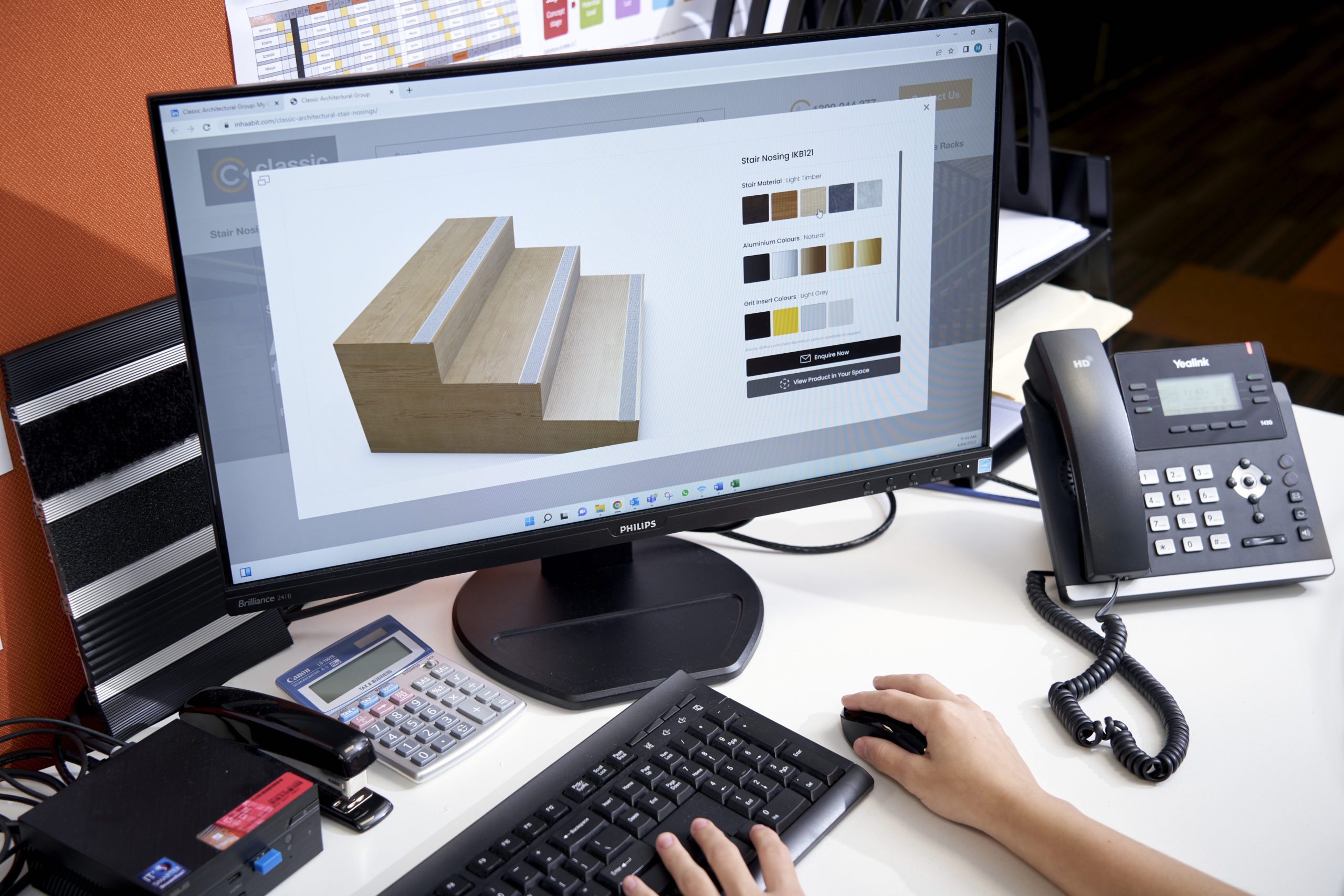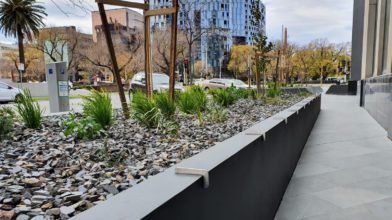With intuitive design and access solutions, you can minimise the risk of slips, trips and falls on your workplace stairways
Whether you’re working on a new project or performing renovations and refurbishments on an existing building, it’s crucial that the design addresses workplace health and safety risks.

According to Safe Work Australia, slips, trips and falls result in thousands of preventable injuries every year. While the most common injuries are related to musculoskeletal, cuts, bruises, fractures and dislocations, more serious injuries have occurred. Between 2003 to 2015, slips, trips or falls led to 23% of serious claims and caused the death of 386 workers.
How many of these accidents happen on stairs?
Out of the thousands of injuries occurring each year, Safe Environments reports that “falls on stairs account for over 60% of slip, trip and fall deaths in buildings”.
Under building regulations and your general duty of care as an employer, you need to work closely with qualified builders and architects to ensure a safe workplace with ease of access – for your workers and the general public.
Why are stairs a safety hazard?
Before we discuss why stairs are a safety hazard, let’s revisit some key definitions.
Slips: Where loss of traction occurs between a person’s foot and the floor, usually due to inappropriate footwear or a slippery surface.
Trips: When a person’s foot catches on an object or surface, such as low obstacles, floor cracks and loose mats.
Falls: This includes falling from low heights and can also occur as a result of a slip or trip.
Here are some of the most common reasons why stairs often pose a safety hazard:
- Poor maintenance
- Too narrow
- Non-uniform structure and surface
- Inadequate landing area
- Obstructions
- Insecure handrails
- Lack of lighting and visibility
- Inadequate traction
- Poor definition
From cables lying around to spills or cracks on the landing, it’s vital that employers and building managers are diligently identifying potential hazards, assessing associated risks and introducing controls to eliminate or reduce those risks as far as practicable. By tending to stair safety risks promptly, the risk of preventable accidents can be minimised effectively.
How can you enhance the safety of stairs in the workplace?
In terms of enhancing stair safety in your workplace, Classic Architectural Group offers two practical solutions, being stair nosings and tactiles.
Stair Nosing
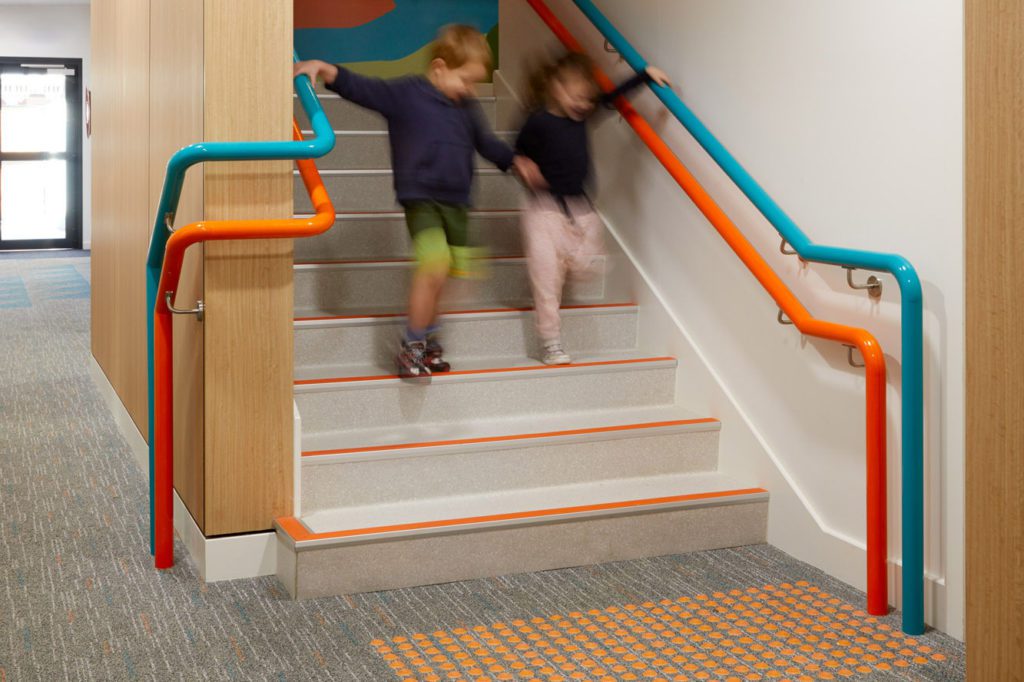
The nose of a step is where people tend to put their feet and weight on the stair, resulting in quicker wear and tear which leads to slips and falls. Considering the tremendous amount of foot traffic in a building, installing safety and visibility-enhancing aids, such as stair nosings, can optimise your access while adding beauty and character to your décor.
Problem solvers and problem preventers, stair nosing can also prolong the wear of both the stair tread and the floor covering product used on the stairs.
With stair nosings, they are profiled strips of material, commonly aluminium, that are fitted on the edge of steps to assist in providing an anti-slip surface.
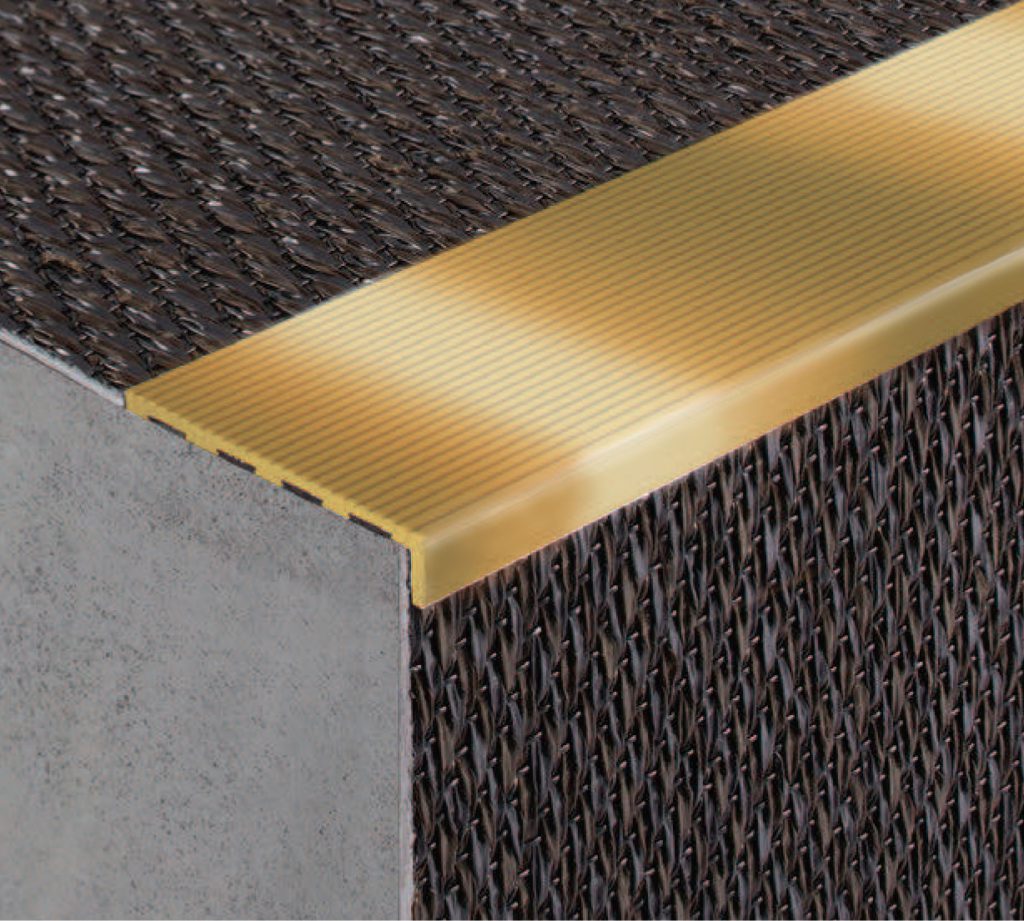
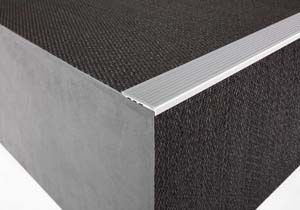
Depending on the application area, level of pedestrian traffic and the pedestrian type, the type of nosing you will require will differ – our friendly consultants can help you choose the best type of stair nosing to meet your needs, along with a solution that’s most durable and aesthetic. Whilst the most common material is brass and aluminium, we also have fibreglass stair nosings and surface mount stair nosings available to suit your projects.
The Building Code of Australia (BCA) adopts Australian Standards AS1428.1, which specifically addresses requirements for stairways and stair nosings, focusing almost entirely on promoting luminance contrast at the leading edge of step treads together with the avoidance of overhang at the front of the stair treads. As such, this means compliance is mandatory and enforceable by law.
For comprehensive information on the mandatory requirements, please refer to Australian Stair Nosing Standards AS/NZS 1428.1.
Tactile Ground Surface Indicators (TGSIs)
Tactile indicators provide cues which, when combined with other environmental information, assist the visually impaired with their orientation.
Accounting for an approximate 330,000 Australians who are blind or vision-impaired, TGSIs are commonly used in high traffic areas of built environments, such as stairways, ramps, escalators and moving walks.
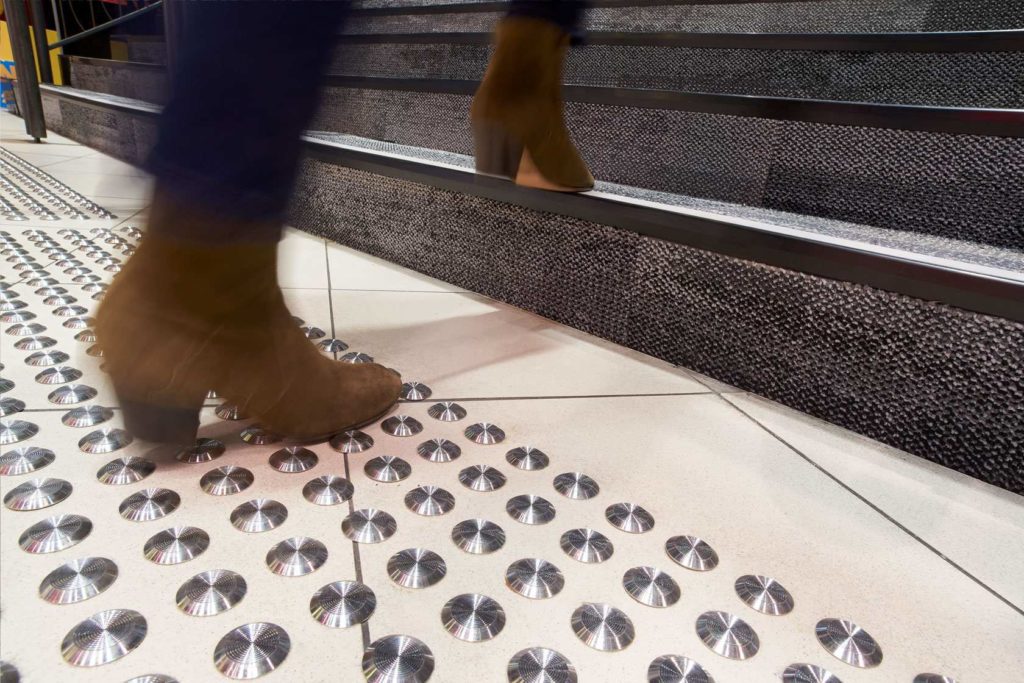
Textured surface features that are applied to the walking surfaces, warning tactile indicators function much like a stop sign. On the other hand, directional tactile indicators consist of directional bars applied to walking surfaces for directional orientation. Installation is required across the full width of the path of travel, enabling them to be felt underfoot or with the tip of a cane.


However, it’s important to note that tactiles alone will not make an unsafe environment safe. As such, the Australian standards have developed a set of initiatives and guidelines to improve access to built environments. Together with good design and planning, tactiles play a secondary role in providing vital warnings and directional information.
For more information on the safety standards on tactile ground surface indicators, please refer to AS/NZS 1428.4.
Everyone deserves easy and safe access
At Classic Architectural Group, we’re committed to supporting architectural and construction firms to design safe workplaces and ensure safety standards in public places.
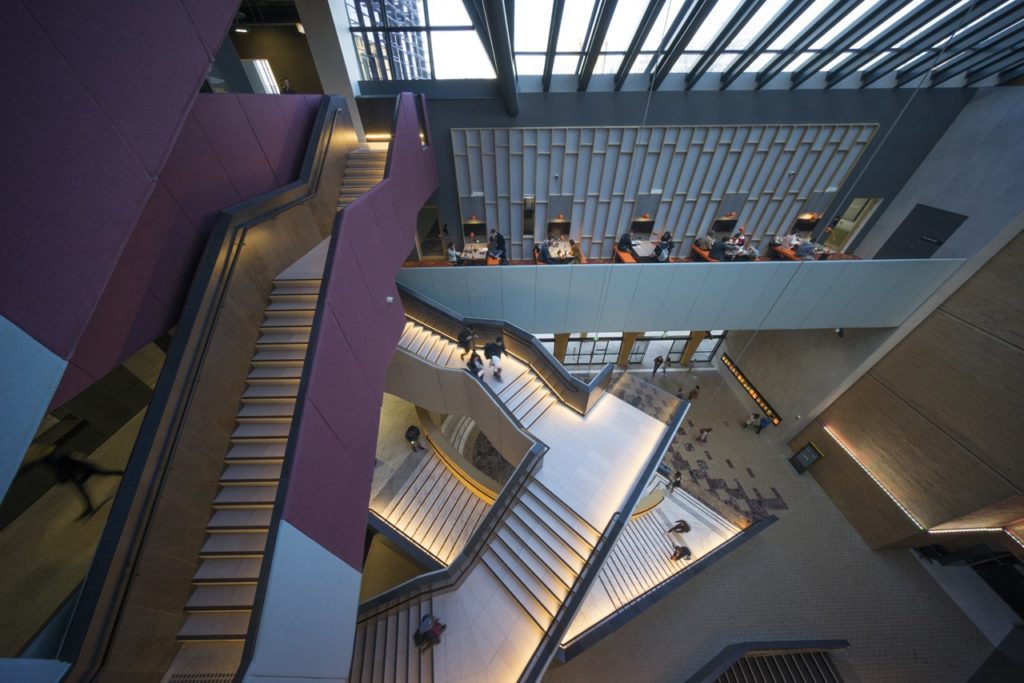
For over 39 years, we’ve delivered and continuously refined our huge range of high durable access solutions – including stair nosings, tactile indicators, entrance matting, covers and trims and car parking systems.
Versatile in design, colour and application, our products ensure that your project is compliant with all regulations and codes, including the Building Code of Australia (BCA) and Australian Standard.
Whether you require the design and installation of stair safety solutions in your workplace or would like further information on how we can provide customised support for your project, please get in touch with us today.
